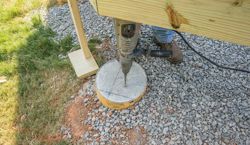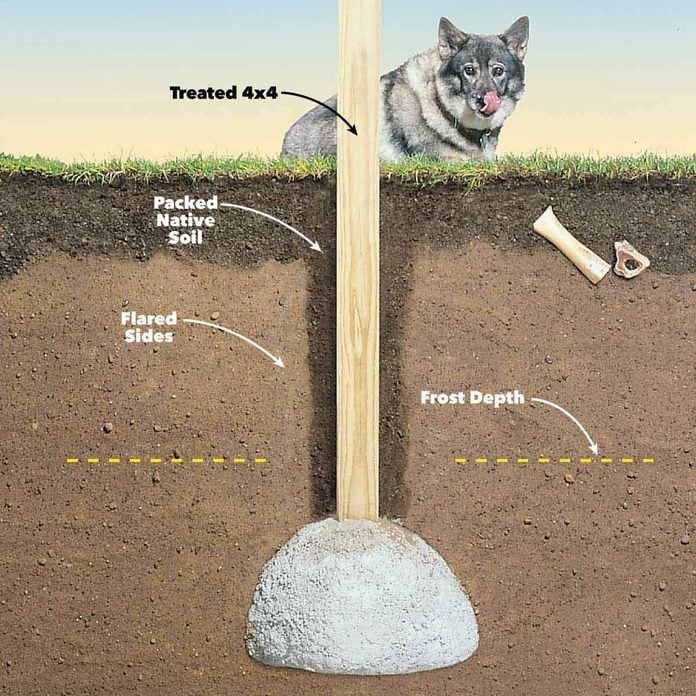Choosing the Right Deck Footings for Stability and Resilience
When it pertains to building a deck, one of the most important decisions you will certainly make is picking the best footings for stability and toughness. The longevity and safety of your deck depend greatly on the kind of grounds you choose, as they offer the necessary assistance and security to stand up to the test of time. With a myriad of alternatives available, it can be overwhelming to determine which grounds are best suited for your details requirements. In this conversation, we will certainly check out the various sorts of deck footings, consider the crucial factors to weigh when making a choice, and look into the advantages and disadvantages of different alternatives. By the end, you will have a clearer understanding of the choices handy and be far better outfitted to make an informed choice for your deck project.
Types of Deck Footings
There are several sorts of deck footings that can be used, each offering unique benefits and factors to consider. One typical type of ground is the concrete pier footing. These footings consist of a cylindrical opening loaded with concrete, which supplies a solid structure for the deck blog posts. Concrete pier grounds are reasonably easy to install and use outstanding stability, making them a popular selection for lots of deck projects.
Another kind of footing is the helical heap footing. Helical stacks are steel shafts with helical plates affixed to them. These footings are set up by screwing them right into the ground, which develops a safe and secure structure for the deck. Helical pile grounds are excellent for locations with tough soil problems, as they can be set up in almost any type of type of soil. If needed., they additionally allow for very easy adjustment and leveling of the deck.
Conversely, some builders go with precast concrete grounds. These grounds are made of long lasting concrete and come in various sizes and shapes to suit different deck layouts. Precast concrete grounds are practical to mount and supply a steady base for the deck framework.
Finally, one more choice is the post-in-anchor ground system. This type of footing includes driving a steel anchor right into the ground and affixing it to the deck message. It uses adaptability in regards to placing the deck articles and is ideal for decks with lightweight frameworks.
When picking the best sort of deck ground, it is necessary to think about variables such as dirt conditions, deck load, and regional building regulations (Deck Footings). Consulting with an expert service provider or architectural designer can aid make certain the suitable ground is selected for a safe and steady deck
Variables to Consider When Choosing Footings
When choosing the appropriate footings for a deck, it is vital to very carefully consider various elements such as soil conditions, deck tons, and adherence to regional building ordinance. These factors play a substantial role in making certain the stability and toughness of the deck structure.
The kind of dirt on which the deck will certainly be constructed determines the type of grounds required. On the other hand, decks constructed on clay or expansive dirts might require footings that can accommodate the soil's tendency to increase and agreement.
One more essential factor is the deck lots. The weight of the deck, consisting of the materials made use of and any kind of prospective live loads such as furnishings or events, must be taken into consideration when choosing footings. The grounds should be designed to birth the weight of the deck and distribute it equally to stop any type of architectural problems or failures.
Finally, adherence to local building ordinance is vital. Building regulations differ from area to region, and it is important to abide by the certain requirements established by the local authorities. Deck Footings. These codes make certain that the deck is built securely and meets the needed standards for structural honesty and load-bearing capability
Concrete Footings: Cons and pros

When used as the foundation for a deck,Concrete grounds supply numerous advantages and drawbacks. On the silver lining, concrete grounds give outstanding stability and longevity. Concrete is over at this website a rigid and strong product that can sustain heavy loads and endure different weather. It additionally has a lengthy lifespan, making it a dependable option for long-lasting use.
Another advantage of concrete footings is their versatility. They can be put right into various sizes and shapes to fit different deck styles and setups. Concrete footings can be customized to fit the specific needs and requirements of the deck structure.
However, there are also some drawbacks to using concrete grounds. One significant downside is the expense and labor included in their installation. Concrete footings require excavation and frequently need the assistance of heavy machinery. This can increase the total price of the deck task and might need professional support.

Helical Piers Vs. Sonotubes: Which Is Much better?
In thinking about the structure alternatives for a deck, the comparison between helical piers and sonotubes is essential in identifying the exceptional choice. They are turned into the ground using hydraulic equipment, supplying a steady and resilient structure for the deck.
The helical plates on the piers produce a solid hold with the dirt, changing or avoiding any kind of motion of the deck. Sonotubes, on the other hand, depend entirely on the concrete loading for stability, Read More Here which might not offer the very same degree of strength and resistance.
In terms of installment, helical piers are fairly less complicated and faster to set up contrasted to sonotubes. The hydraulic equipment used to turn the piers right into the ground guarantees a effective and fast procedure. Sonotubes, on the other hand, need excavating holes and pouring concrete, which can be labor-intensive and time-consuming.
Furthermore, helical piers are an even more versatile option. If needed, they can be used in different dirt problems and can be adjusted or strengthened. Sonotubes, on the various other hand, might call for additional support, such as rebar, in specific dirt problems or locations with high load requirements.
Choosing the Right Footings for Your Deck's Dimensions
For optimal structural stability, it is necessary to thoroughly choose the proper grounds that straighten with the measurements of your deck. The measurements of your deck, including its size, elevation, and size, play a considerable function in figuring out the kind and dimension of grounds needed.
When picking grounds for your deck, it is essential to take into consideration the load-bearing capacity of the dirt. The weight of the deck, combined with the weight of any furnishings or people on it, exerts a significant force on the grounds (Deck Footings). Consequently, it is crucial to pick grounds that can appropriately sustain this weight without sinking or changing gradually.
Larger decks with higher measurements call for bigger footings to give sufficient stability and support. The shape of the grounds, whether they are square or round, depends on the style and format of the deck.
Verdict
In final thought, selecting the appropriate deck footings is important for guaranteeing security and my sources sturdiness. Variables such as the type of grounds, the deck's measurements, and the pros and cons of various choices need to be thought about.
These footings consist of a cylindrical hole filled up with concrete, which offers a solid structure for the deck blog posts. Concrete pier grounds are reasonably simple to install and provide superb security, making them a preferred selection for lots of deck tasks.
Precast concrete grounds are practical to mount and provide a secure base for the deck structure.
It uses flexibility in terms of positioning the deck articles and is suitable for decks with light-weight frameworks.
Concrete footings provide a number of advantages and downsides when used as the foundation for a deck.